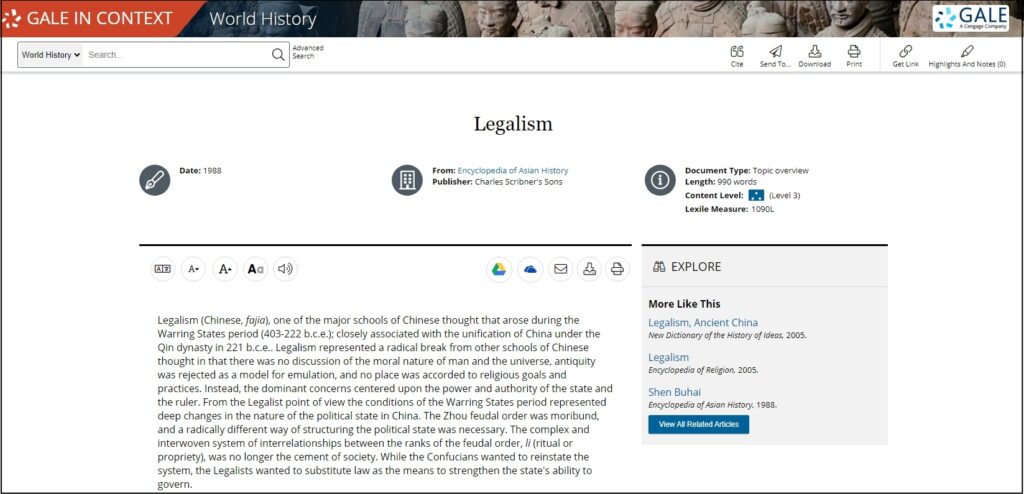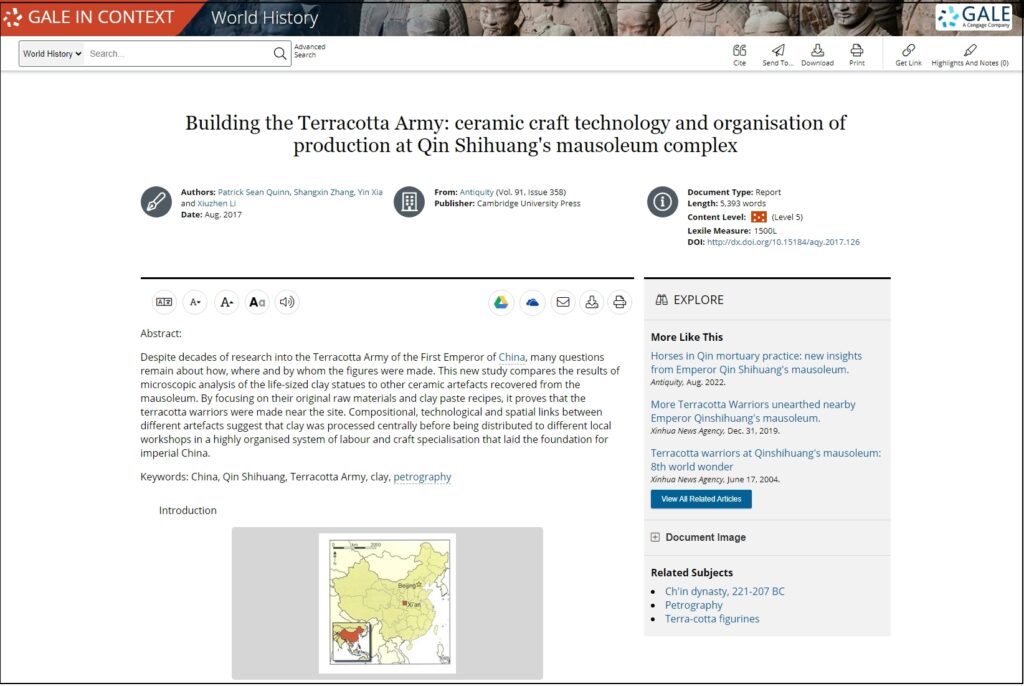| By J. Robert Parks |
Many of the great archaeological finds are made through careful planning, as researchers and archaeologists determine where they are likely to find something and then explore and dig until they do. Other finds, however, happen through sheer happenstance. Such was the case with one of the greatest archaeological discoveries of the twentieth century: the terra-cotta warriors in Lintong County, near Xi’an, China. It was 50 years ago this week, on March 29, 1974, that a group of farmers there were digging a well, and one of them, Yang Zhifa, uncovered pottery shards and bronze projectile points. This led to the discovery of thousands of life-size terra-cotta warriors, chariots, and horses. Teachers and librarians educating students about archaeology or ancient China will uncover a trove of resources in Gale In Context: World History to aid students in their own discoveries.
The terra-cotta warriors were made at the order of the emperor Qin Shi Huang, who lived from 259 to 210 BCE. He was born during what is known in Chinese history as the Warring States period, and he was able to lead the Qin people, the farthest west of the Zhou peoples, to seize control and establish China’s first united empire in 221 BCE.
The Qin Dynasty combined aspects of Daoism, Confucianism, and what was known as Legalism. The government established a central bureaucracy, which included sending out officials from the capital to administer the outer regions on behalf of the emperor. Qin Shi Huang also abolished the old states and their nobility, ensuring that the emperor and the bureaucracy behind him would face little competition. The central bureaucracy became the hallmark of China throughout successive dynasties.
Qin Shi Huang was a ruthless but extremely effective leader. Despite ruling for barely a decade, he standardized the empire’s currency and writing; undertook various public works projects, including a highway system; and built up the military fortifications that became the basis for the Great Wall. He emphasized education as a condition for training government officials. The emperor also built an audience hall that could hold 10,000 people, to project the majesty of the empire.
The terra-cotta warriors were designed to protect the emperor in the afterlife. He had faced multiple assassination attempts in his relatively short reign, and he became obsessed with what might happen after he died. As was true in many ancient civilizations, Qin Shi Huang believed that objects in his tomb would provide for and protect him in the next life. To that end, he conscripted hundreds of thousands of people to build the enormous tomb and his terra-cotta army.
One of the many interesting aspects of the warriors is that they are all unique. It appears they were made on a kind of production line, with different body parts made by different people and then assembled into one figure. The result is that the warriors are roughly the same size and shape, but they have individual qualities. In particular, they have different hairstyles, and each was painted differently. They were also outfitted with real bronze weapons.
Along with thousands of warriors holding a variety of weapons, the terra-cotta figures also included horses and chariots. At the impressive museum northeast of Xi’an that now houses the figures, the horses and chariots are particularly popular, with people crowding around the glass cases to notice the details and take photos. In an enormous hangar-like room, the warriors that have been restored are lined up in long rows, as they would have been when they first were made. Chinese archaeologists continue to excavate parts of the tomb complex and restore various figures, and visitors can see that process in action.
The Qin Dynasty only lasted a few years after Qin Shi Huang’s death, and although rumors of his tomb’s grandeur persisted for centuries, it was lost to time. Lost, that is, until a peasant farmer living centuries later happened upon it.
About the Author
J. Robert Parks is a former professor and frequent contributor to Gale In Context: U.S. History and Gale In Context: World History who enjoys thinking about how our understanding of history affects and reflects contemporary culture.




